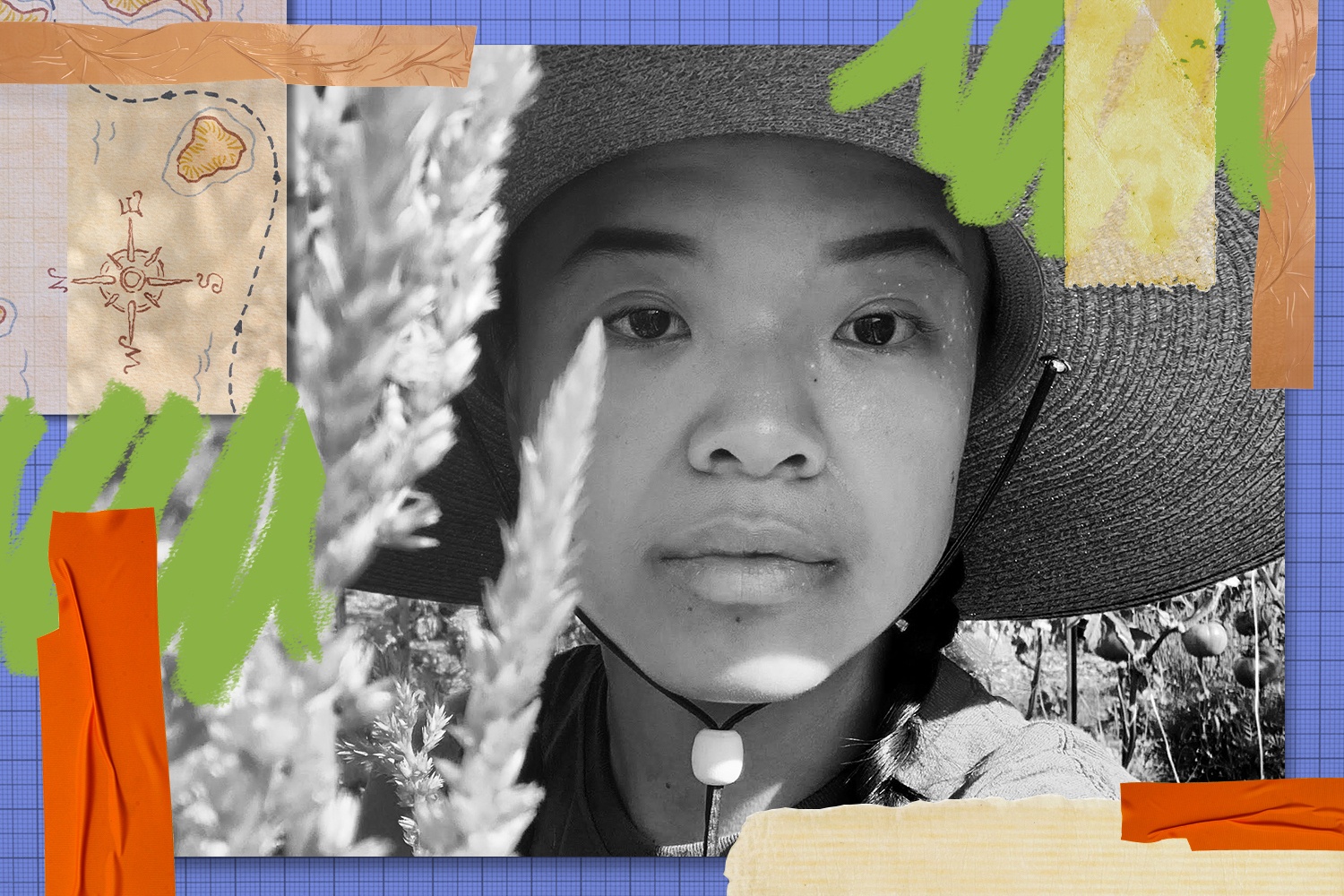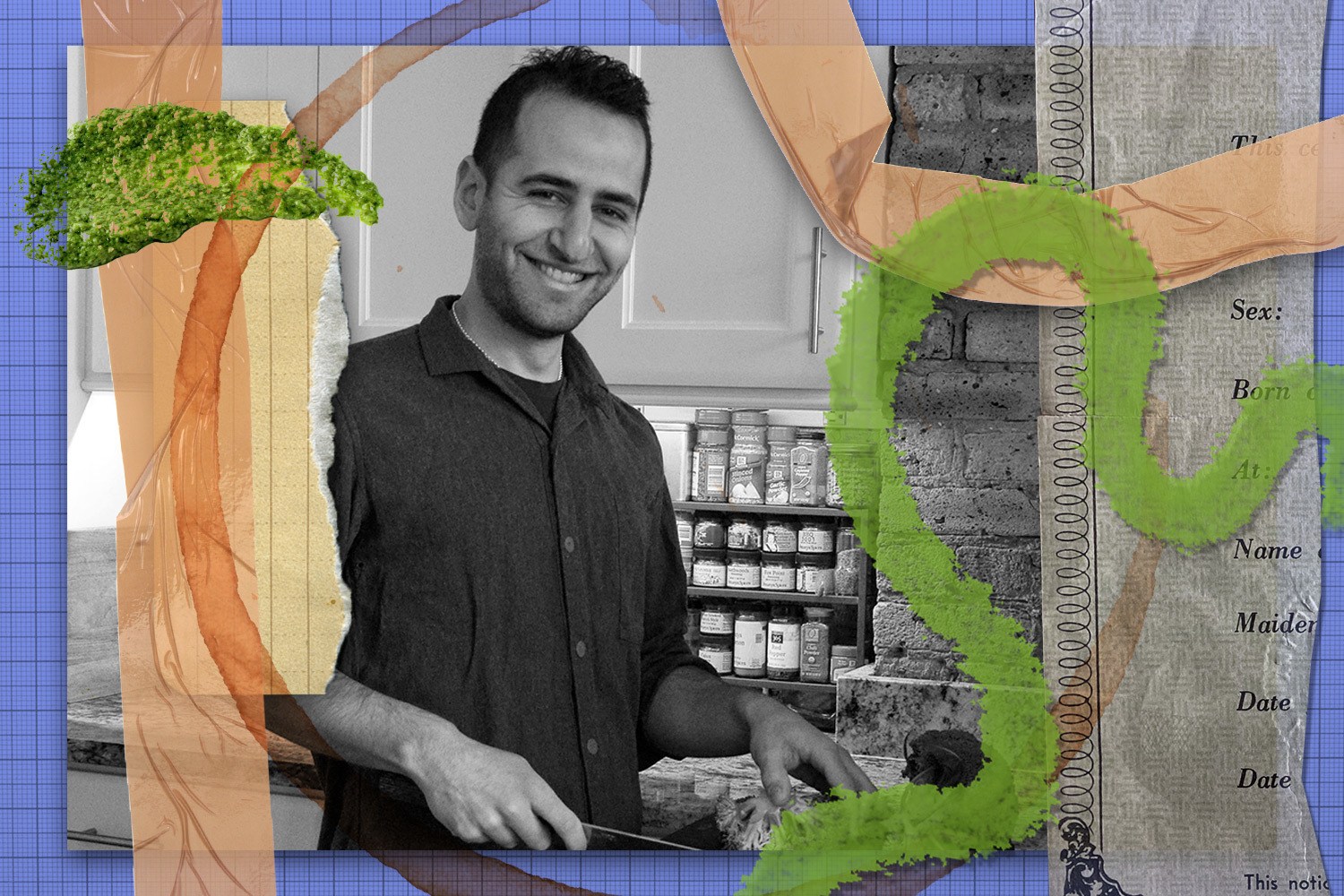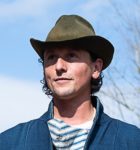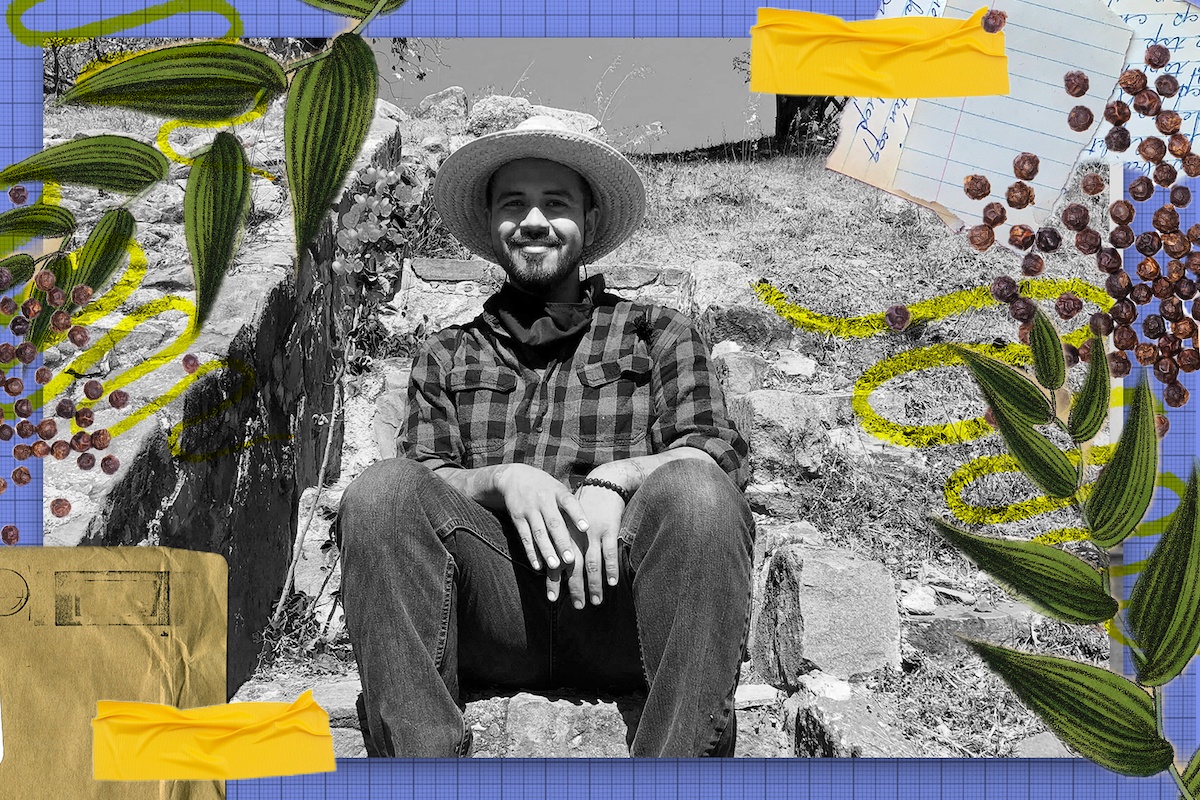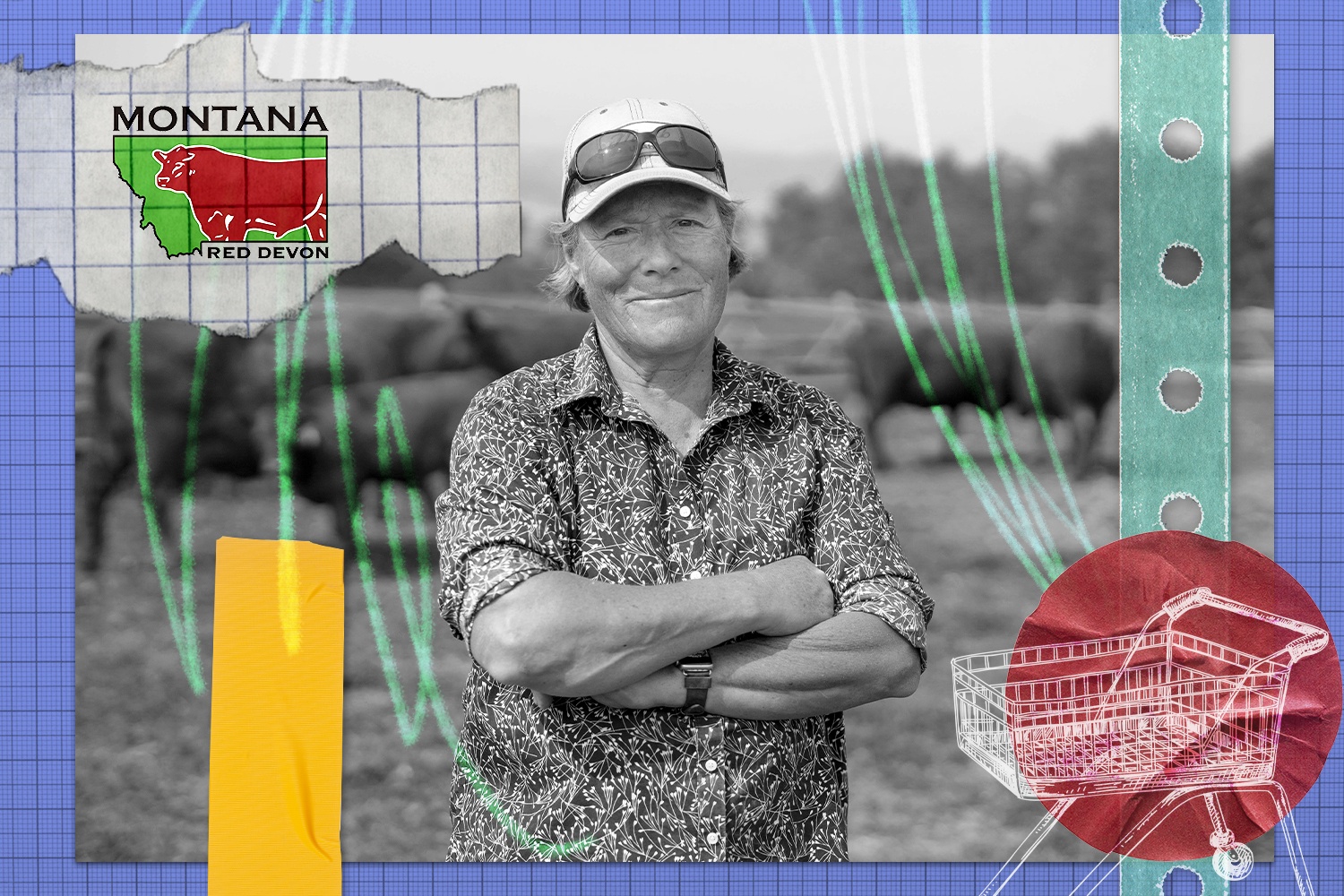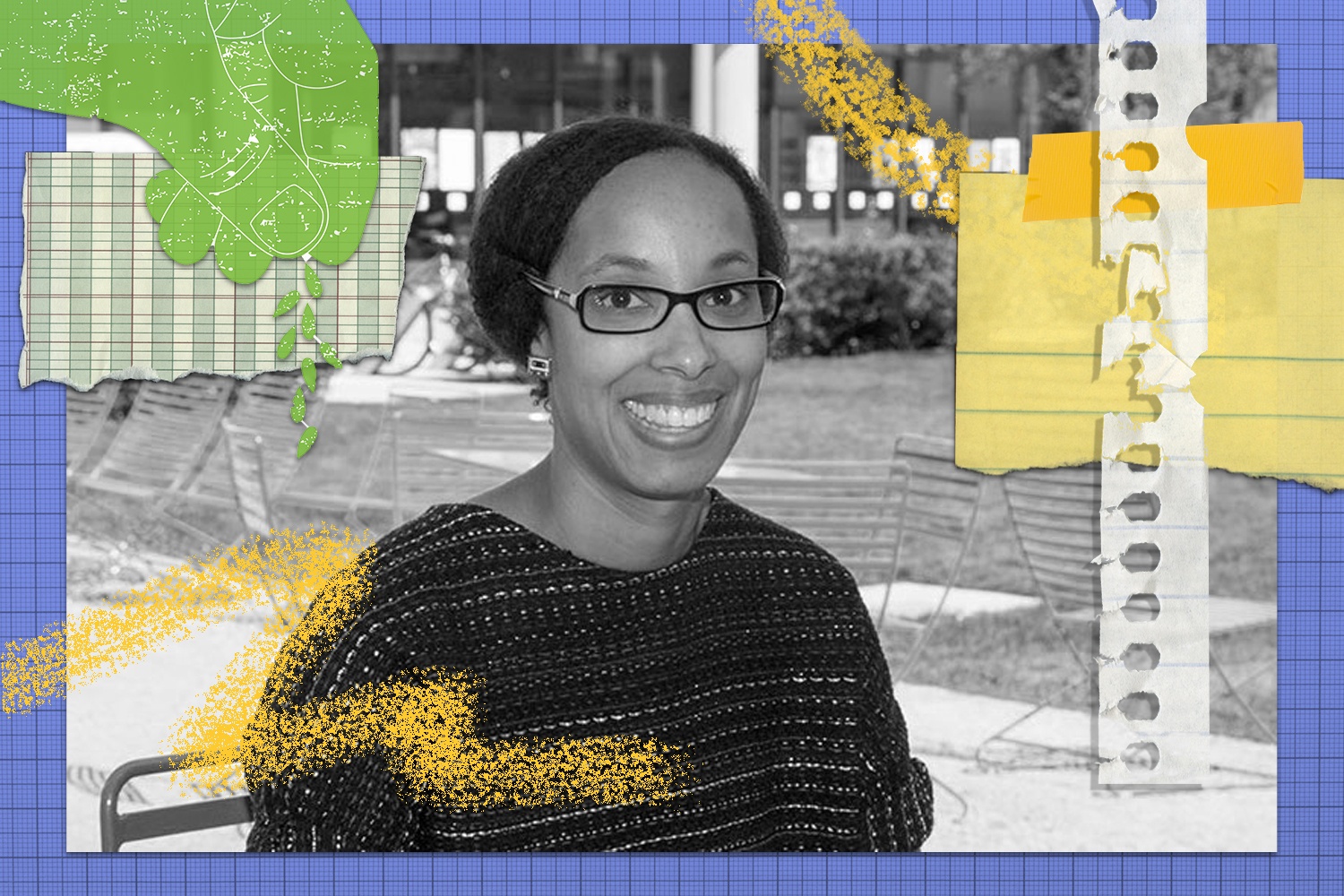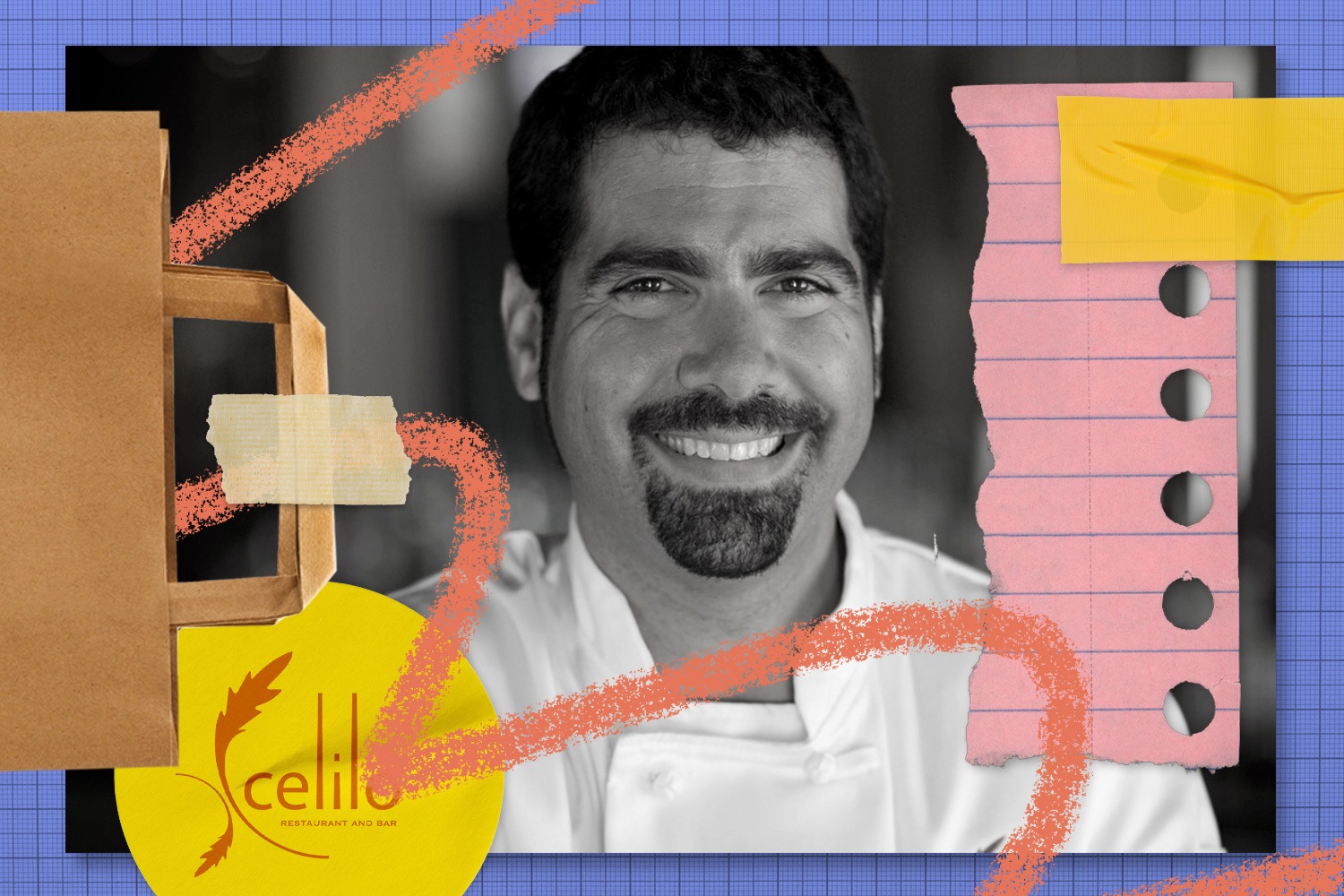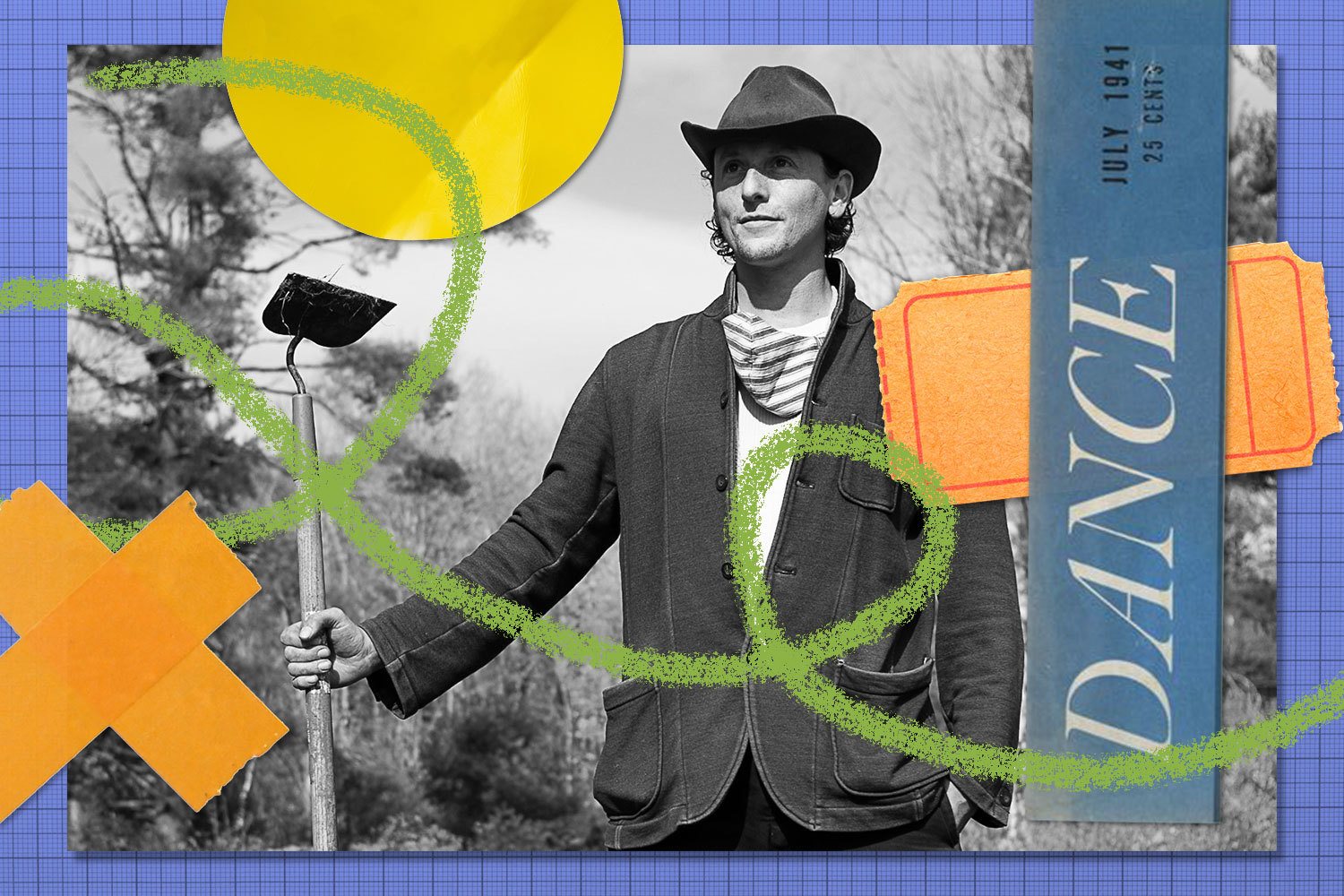
Portrait: Christopher Duggan | Collage: The Counter/iStock
The Berkshire-based performance venue owns more than 220 acres of verdant land. During the pandemic, Weinert started cultivating it.
Adam Weinert is a noted dancer and choreographer; his adult life has been almost entirely consumed with dance. But something ate at him for nearly a decade, a sense of wanting to grow food, to work with his hands, to farm. In his off hours he studied farming online, attended agriculture conferences, and gained practical skills without anywhere to try them out. During the pandemic, his side passion found purpose. He convinced Jacob’s Pillow, one of the most renowned dance spaces in the world, to let him start farming a couple acres of their land. The produce would be used to feed the Pillow’s thousands of staff, performers, interns, and guests, while allowing Weinert to stage performances in the growing fields. Notably, this would not be the first time Jacob’s Pillow had a team of dancer/farmers working the land: Its founder, Ted Shawn, made his performers do several hours of daily farm work back in the 1930s. Everything old is new again.
—
I was a student at Jacob’s Pillow all the way back in 2003, as a high school kid. Since then I’ve been back a number of times, in a number of ways. I performed there. I was a research fellow. I taught there. I brought my company there three times. I just keep finding new excuses to go back and involve myself.
The first proposal I put forward for this farm project was in 2014, and I basically tried to convince them it was a great idea every year since then. Last year when Jacob’s Pillow was closed, these conversations started taking on a different tone—a more serious consideration. You can imagine that during a busy festival, it’s hard to create brain space for an idea that’s a bit outside of everybody’s wheelhouse. Covid gave everyone a pause to think about what’s possible. I also think that the last year brought to the fore some issues around the vulnerabilities of our food systems. Finding ways that this farm project could help the Pillow achieve some of their sustainability goals, I think that was key.
This project is kind of old, kind of new. Originally, in the 1930s, they grew most of their own food here. It’s a bit unclear when that practice fell away. I’ve read diaries of chefs over the course of the Pillow’s history, and at different times they do refer to harvesting some turnips or whatever. But there hasn’t been any edible landscaping to speak of for many decades, no real growing program. This is truly harkening back to a beforetime.
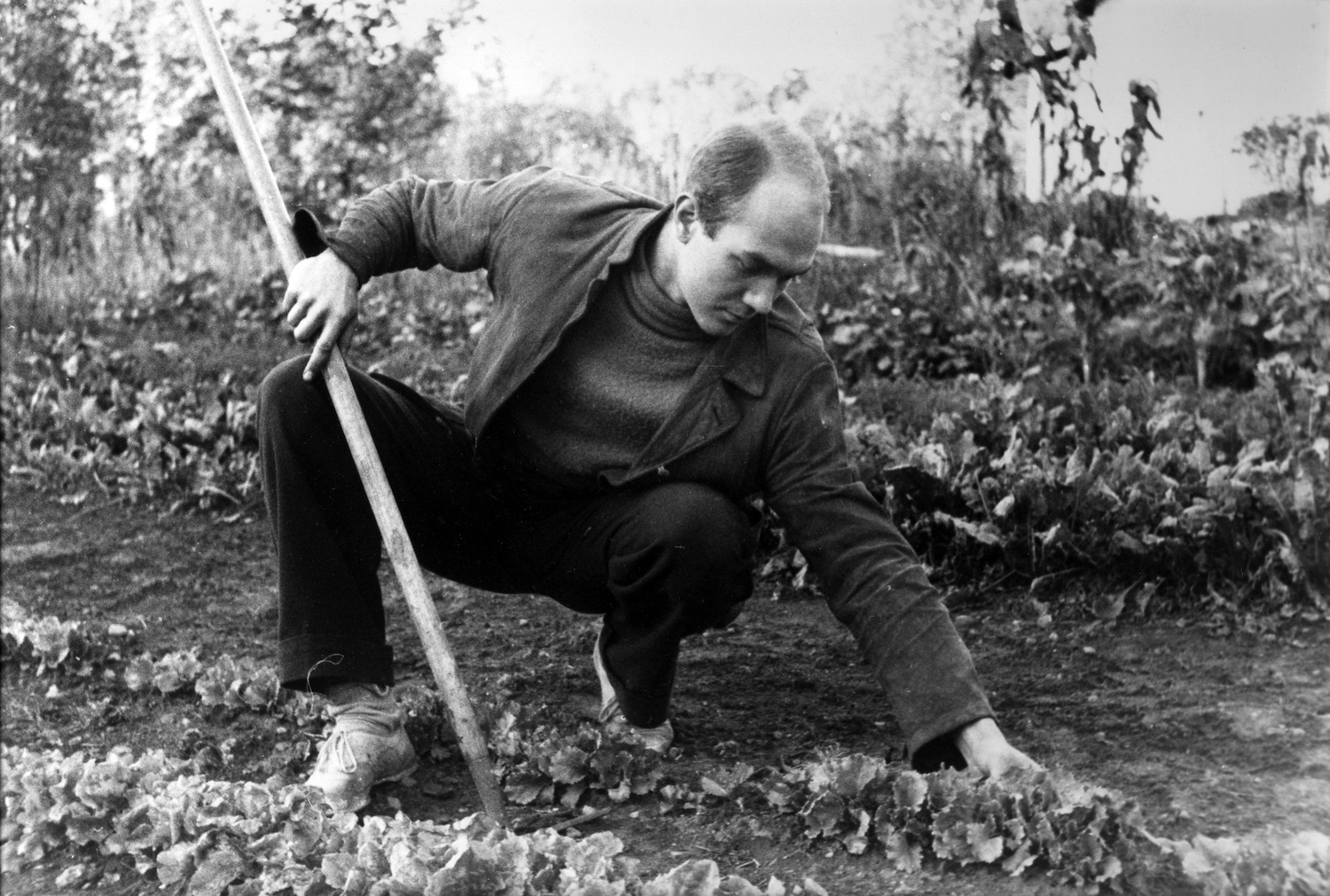
Dancer Fred Hearn tending to the garden at Jacob’s Pillow, 1936.
Richard Merrill 1936, courtesy of Jacob’s Pillow Archives
I grew up in Manhattan, pretty far from the farming life. If it had been available, I probably would have been a nature kid. I did spend a few summers with my grandmother in the south of Wales as a kid. She was a passionate gardener, and I think she probably gave me the bug. In the last decade I’ve been learning more and more about farming, attending the Young Farmers Conference, coming up with a conservation action plan, a business plan, different kinds of crop rotations. This year is my first full-on growing season.
I’ve been outed as a total novice [laughs]. We’re working with a group called Greenagers who are this very cool, Berkshire-based nonprofit that empowers young people through growing. They have trailblazing crews, agricultural crews, victory garden crews. They’re giving them paying jobs in agriculture. And these kids, or I should say young adults, they know a lot more than I do. On the first day in the field, we hit this boulder in the middle of our primary growing area. It was huge; we never found the edges. I basically had to scrap my entire growing plan.
I had done all the research, I had this plan, it was meticulous, it was all the things. And it was interesting because I started training in dance 30 years ago, and I became accustomed to confidence in my mastery of that form. I feel like a total expert in dance. And then here I am in this farming stuff, and I’m forced to contend with the clear reality that I’m not an expert. It’s humbling!
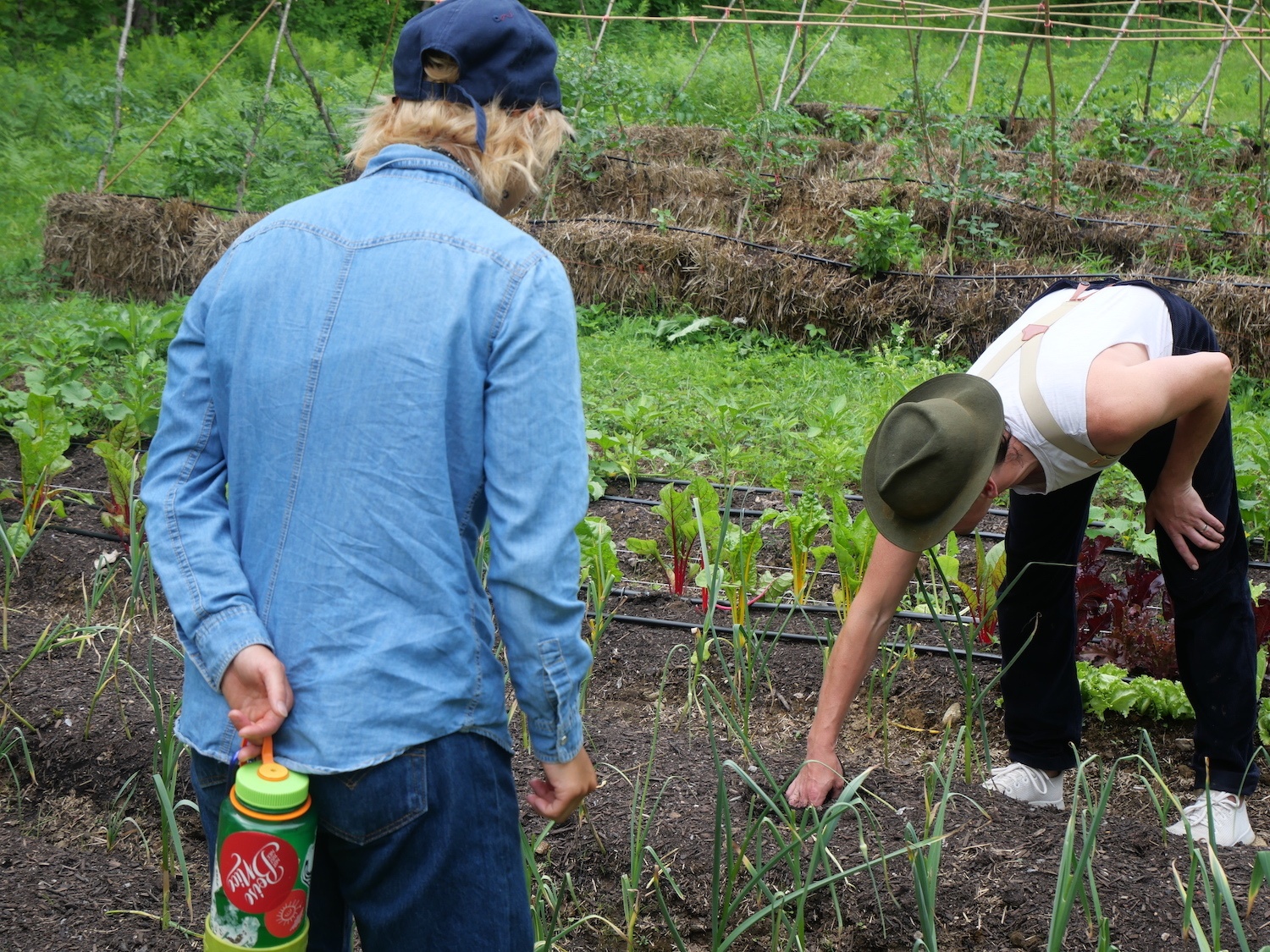
Weinert is relatively new to farming, but he’s been attending agriculture conferences and studying diligently for years in preparation for this transitional moment.
Jesse Hirsch
We’re starting with this field which is about an acre and a half. Right now we have 16 35-foot rows. Then we also have a perennial garden which is a bit more whimsical than the garden-style rows. The Pillow has over 220 acres, so if this goes well and is able to be incorporated into food services, there’s a lot of room for growth. There is a lot of land which is underutilized. And we’re looking into things like agroforestry and silvopasture; pigs could do really well in those woods. I haven’t actually gotten the green light to start raising pigs, but I’m hopeful!
We’re approaching this as a year of deliberate experimentation. We have lettuces, kales, chards, peppers, squash, tomatoes, a lot of herbs like basil, parsley, eggplant, corn, arugula. One that I’m excited about is the arnica bed. You know arnica is used by dancers all over the world for sprains and injury. I like the idea of making a salve out of that. We have a tea blend bed because I’d love to have tea for volunteers or people who want to visit the garden.
The dance festival sits nicely inside of the growing season, but it ends a little early, around mid-August. So we’re kind of focusing on things that are fast to grow like peas and lettuces. I was trying to find crops that are quickest to maturity, plus perennials like strawberries and blueberries. Last week we had our first harvest. Seven and a half pounds of produce; I don’t mind bragging!
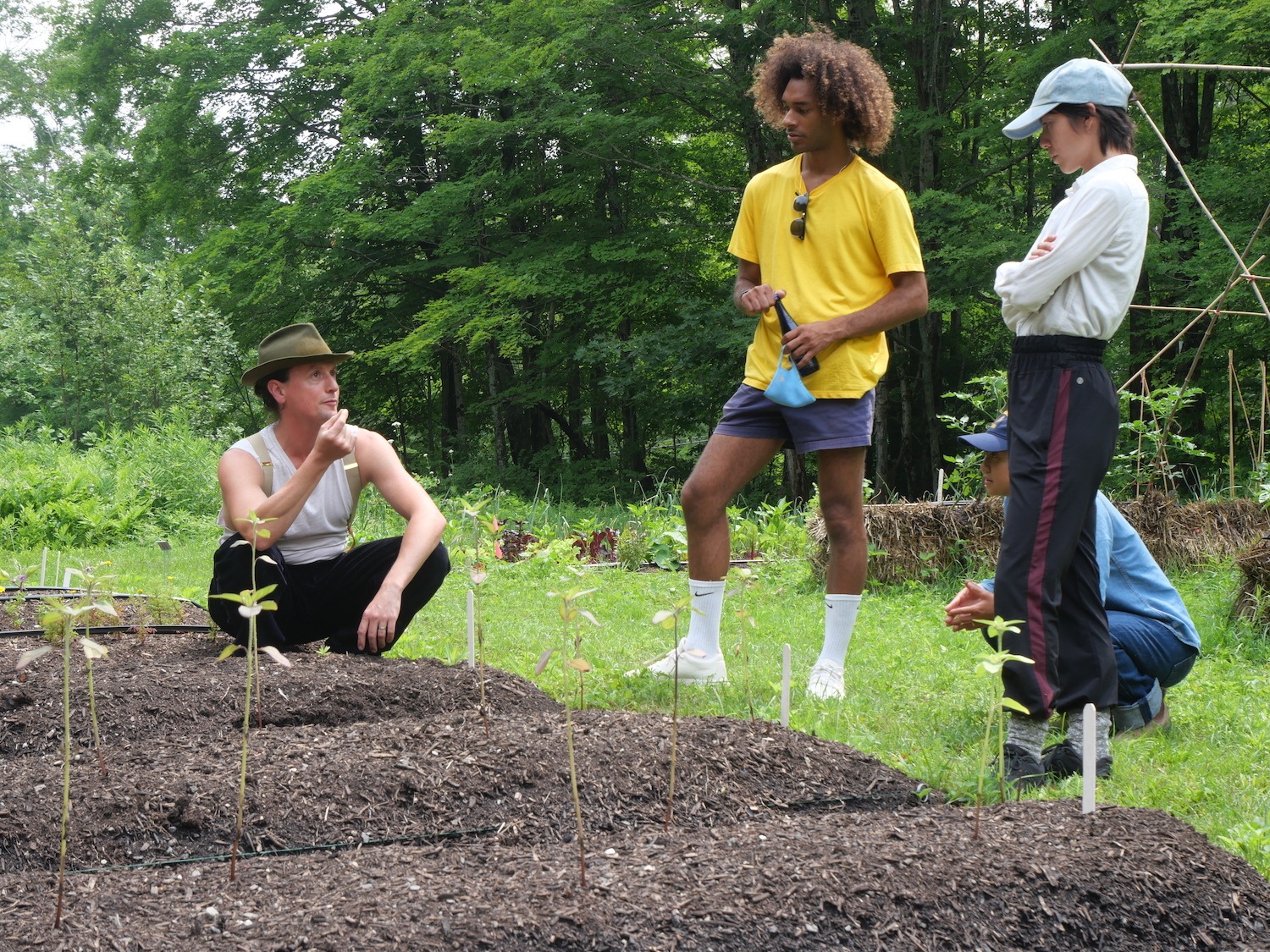
Adam Weinert gives growing lessons to dancers Brandon Washington, Ching Ching Wong, and Cynthia Koppe (L-R).
Jesse Hirsch
Right now we have two volunteer days a week, a Saturday volunteer day for the public, when anybody can sign up to come help. And then Mondays, which is the festival’s day off, so we have a volunteer day for the Pillow family. That’s been really sweet, to get interns from the archives or people in the administration working in the field. I would love to incorporate farmwork into the training regimen for all of the students, because that’s what Ted Shawn and his dancers did. They had two or three hours a day of farm work, and that was part of their physical training as well as their creative practice.
Ted Shawn was also trying to create a whole ecosystem for dance. He thought it was important that his dancers be away from the city, that they live close to nature, eat simple food. And he wanted his dances to be relatable to the broad American public. At that time, most Americans had laboring jobs, so he wanted his dancers to have an experience of that. He thought ballet was this sort of bourgeois Eurocentric thing and he wanted his company to be a populist, for-the-people kind of movement. And a big part of that was a connection to the land.
There was a lot of thought behind it; it was very intentional. It was also practical because this was the Great Depression, and they needed to feed the performers. I love that duality. They did this farm work every day so I thought okay, I should do that as part of my process; it’s like method acting. But to be honest, after just a few weeks, I really felt a profound change—in my sense of rootedness in the ground, in my sense of space and time.
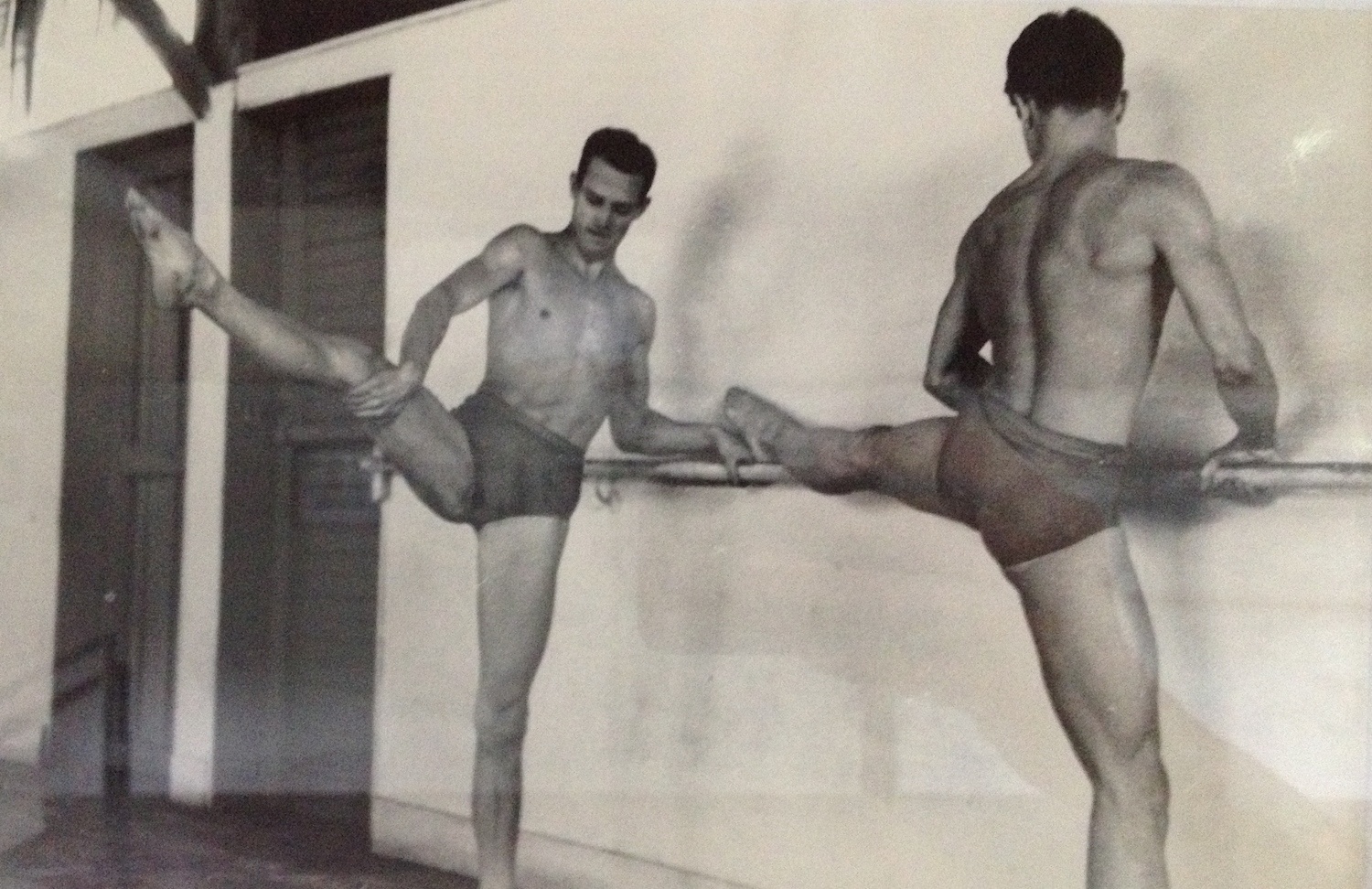
Ted Shawn’s Men Dancers, Courtesy of Jacob’s Pillow Archives
Courtesy of Jacob’s Pillow Archives
My dancers are finally visiting the farm [the week of July 4]. We’re doing this performance where we’re going to be harvesting the garlic and offering it to members of the public; that was the first thing we planted last October. And we’re performing a reconstructed dance from 1916 called Tillers of the Soil, which was a duet for Ted Shawn and his dance partner Ruth St. Denis. So that’s sweet. It’s a pantomime of tilling a field, but we will be performing it in the actual garden so we won’t need to use our acting as much.
One of my dancers, Brett Perry, who I went to school with, is now working on a farm in Boise, Idaho. Another dancer I worked with for years has an urban landscaping company in Brooklyn. Another dancer I know is in horticulture school. There’s something there, a connection of dance and growing: It’s not just me. I feel the connectivity. There’s this sweat equity. It’s this sensuous thing. I feel it intuitively, though I struggle finding the language to articulate it. I would just love to help find the language to get at what this connective tissue is.
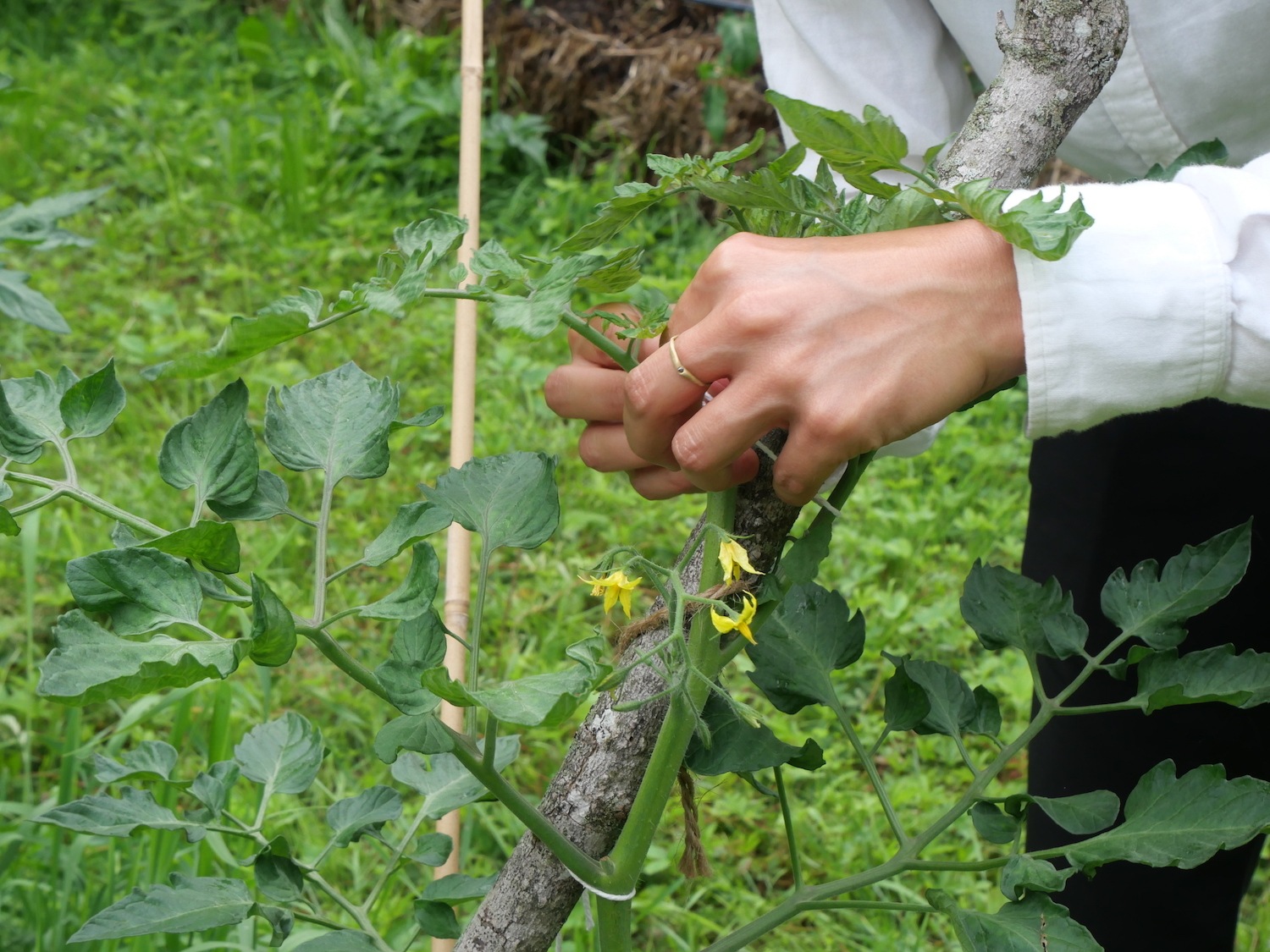
Dancer Cynthia Koppe ties tomatoes for the first time at Jacob’s Garden in early July.
Jesse Hirsch
I know that dancers can have a really strange relationship to food; personally I struggled with bulimia throughout my career. Dance is a visual art form and how you look affects the parts you can get. But dancers are also athletes. You need to be fueling your body in specific ways, and I think that’s where you can get into trouble. I haven’t figured out exactly how to tackle eating disorders with this farm project yet. But it’s all there.
I’ve also found it incredibly empowering to grow things out of the earth. With dance you work so hard and at the end of the day, the dance is over and you have nothing to show for it. But here, here’s a tomato. It’s a real thing, it’s tangible, it’s in your hands. It’s a thing that nourishes people. It’s really powerful.
